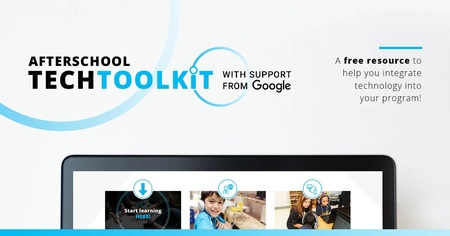Young children are curious about the world around them and today that world includes technology. But how can afterschool educators promote positive, creative and playful engagement with technology with their youngest learners?
One way is with STEAM robot toys, which offer playful, hands-on 21st-century learning, including the introduction to screen-free coding.
Why is coding so important?
We teach children to read and write because it opens new doors for them, gives them new ways to think about the world, and offers new ways to express themselves. The same is true for coding. When we learn to code, we learn to think sequentially, to think logically, to solve problems. And most important: We gain the ability to create anything we can dream of.
STEAM robotics offers six key benefits.
1. Coding teaches the literacy of the 21st century.
Teaching children to code gives them fluency in a new set of tools for self-expression.
2. Coding develops computational thinking skills.
It explores the connections between computational thinking and the cognitive skills developed in early childhood.
3. Technology becomes the playground.
Technology-rich experiences for children should be modeled on the idea of a playground.
4. Robotics makes coding tangible and concrete.
Young children think and learn best when moving, playing, building and engaging with concrete objects.
5. Using technology breaks down engineering stereotypes.
Even in early childhood, children are already beginning to form opinions and stereotypes about which tools and technologies are better suited toward boys.
6. The engineering design process encourages persistence.
This is where children identify a problem, imagine and plan a solution, build and test their creation, and share their work with peers.
The dynamic learning environment of an afterschool program gives children the perfect opportunity to benefit from all these aspects of robotics. Afterschool educators need to engage a wide range of children's interests. The diverse activities STEAM robotics supports—coding, building, storytelling, decorating, roleplay—make it a perfect foundation, but it's important to choose a flexible and age-appropriate robotics platform.
Learning through play!
KIBO, the screen-free robot toy designed for learners ages 4 to 7, offers a fun and creative way to learn to code—but they will think it's just play! With arts and crafts, KIBO can turn into engaging afterschool projects: a bowling ball game, a free-throw basketball game, a car "race," a re-enactment of a favorite storybook and more.
Backed by 20 years of child development research, KIBO has proven efficacy in engaging students to learn STEAM concepts—and getting them excited about it! Learn about the six benefits of coding and robotics and how integrating an age-appropriate STEAM robot such as KIBO into an afterschool program can be fun and easy.
For more information, download the free white paper Learn the 6 Key Benefits of Using Robotics with Your Youngest Students.
Don't forget to attend this webinar on introducing fun and playful STEM Robotics to your afterschool program.
Written by Jason Innes, Director of Training and Curriculum Development at KinderLab Robotics. Jason develops STEAM curriculum and leads professional development workshops, helping educators integrate KIBO robotics and playful STEAM activities into their existing curriculum. He has presented on robotics, early coding, and KIBO integration at numerous conferences and workshops.
Content and photo courtesy of KinderLab Robotics.




